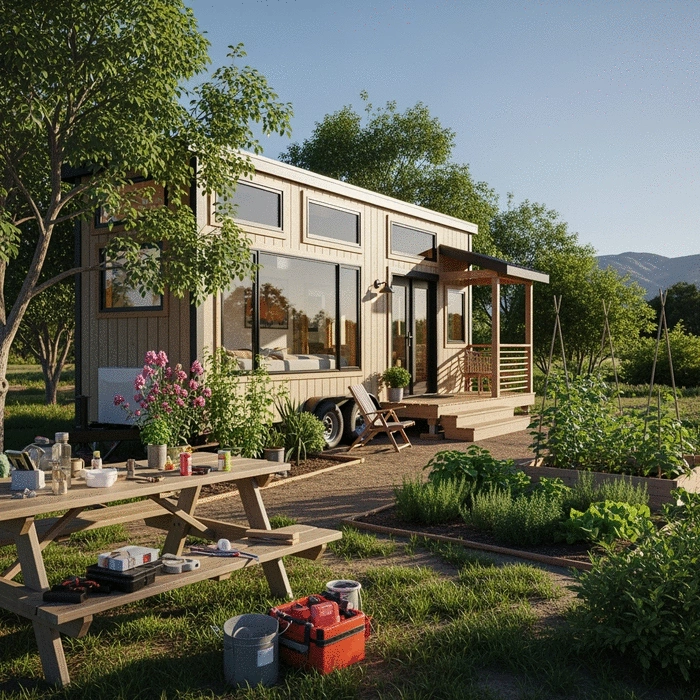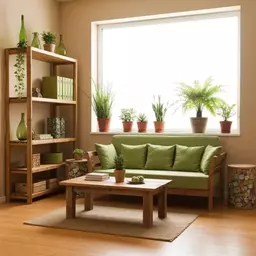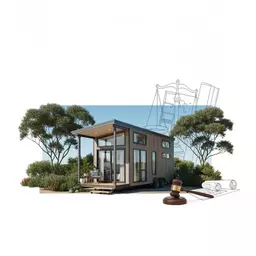Financial Savings
Lower mortgage payments and reduced living costs allow for more financial freedom.
Get expert advice, innovative design ideas, and practical tips for your tiny home journey in Australia.
Posted on: 2025-10-27
By: Sophie Marchant
Are you ready to discover a lifestyle that emphasizes freedom and simplicity? The tiny house movement is not just a trend; it represents a profound shift towards minimalism and environmental consciousness. Let's explore the essentials of tiny living and budgeting that can enhance your life.
Understanding the financial implications and benefits of tiny house living can guide your journey. For those looking to make informed decisions about their living space, consider choosing your ideal tiny home.
Lower mortgage payments and reduced living costs allow for more financial freedom.
Smaller homes require fewer resources and energy, promoting a sustainable lifestyle.
Many tiny home enthusiasts find support in like-minded communities fostering collaboration.
A minimalist lifestyle encourages fewer distractions and more clarity in your daily life.
Tiny homes can easily be relocated, giving you the freedom to change your scenery.
Welcome to the world of tiny house living! As someone who’s deeply passionate about sustainable living and the tiny house movement, I believe understanding the groundwork of tiny homes can genuinely transform your life. This journey is not just about downsizing; it’s about embracing a lifestyle that emphasizes freedom, simplicity, and a connection to nature. If you're ready to explore this exciting path, let's dive in!
The tiny house movement has grown significantly, especially in Australia. Many people are discovering the joys of minimalism, allowing them to live debt-free and reduce their environmental footprint. I started The Tiny Living Guide to share tips and insights, helping you navigate the ins and outs of tiny living effectively.
The tiny house movement is more than a trend; it’s a lifestyle choice that many have adopted to live with less and experience more. Have you ever wondered what drives people to downsize their living spaces? It’s often about freedom, financial relief, and the desire to spend more time on what truly matters—like family, travel, or personal growth!
Here are some key benefits of being part of this movement:
Living in a tiny house offers numerous benefits that can enhance your quality of life. For me, the biggest draw is the freedom it provides. With a smaller space, you spend less time cleaning and maintaining your home, allowing you to focus on experiences rather than possessions. You can learn more about sustainable living in tiny homes and its advantages.
Some additional advantages include:
At the heart of tiny living is the mindset of minimalism. This philosophy encourages you to prioritize what’s truly essential in your life. When I embraced minimalism, I found joy in simplicity, which profoundly changed my perspective on possessions.
Here are some core principles to consider:
Many advocacy groups are working tirelessly to promote the tiny house movement. These organizations play a vital role in educating potential tiny homeowners about zoning laws and sustainability. They also create platforms for sharing stories, resources, and advice.
Joining a tiny house group can connect you with others who share your passion! Some noteworthy groups include:
Budgeting is a crucial part of your tiny house journey. Understanding the costs associated with tiny living can help you make informed financial decisions. With my experience, I recommend breaking down your budget into manageable categories to keep things organized and clear. To help with this, you might explore financing your tiny house purchase options.
Here are the key components to consider when crafting your tiny house budget:
When budgeting for your tiny house, it’s vital to break down these costs clearly. This will not only give you a realistic view of your financial commitment but also help you prioritize your spending. Here’s a quick breakdown of potential expenses:
Managing your budget effectively can lead to a smoother project. I’ve found that staying organized and being realistic about your finances are key to avoiding any surprises. Here are my top tips for budget management:
Finally, there are some key considerations that can help you stay on track with your tiny house budget. Understanding these can prevent overspending and ensure your project aligns with your financial goals:
With these insights, you're well on your way to understanding tiny house living and budgeting basics! Remember, starting this journey is about more than just saving money; it’s about creating a life that aligns with your values. If you have any questions, don’t hesitate to reach out through The Tiny Living Guide. Together, we can embrace the incredible journey of tiny living!
Did you know? Establishing a tiny house community not only fosters support but can also lead to shared resources and reduced costs. Engaging with neighbors can provide opportunities for collaborative projects, bulk purchasing of materials, or even shared tools, all of which can enhance your tiny living experience while keeping expenses in check!
As you reach the end of your tiny house project, it's a great time to reflect on the journey. Have you thought about the lessons learned during the building process? Taking a moment to evaluate what worked well and what didn’t can provide valuable insights for future endeavors. At The Tiny Living Guide, we believe in learning through experience, so let's dive into how to effectively assess your tiny house journey!
One way to evaluate your project is by gathering feedback. This could come from friends, family, or fellow builders who appreciate the work and effort you’ve put into your home. Sharing your experience helps foster a community of support and ingenuity, which is something I truly value. Learning about space-saving tiny house designs can also be a great way to refine your future plans.
To properly assess your building experience, consider the following aspects:
Ready to take the plunge into tiny house living? It’s easier when you surround yourself with a supportive community! Here are some ways to connect and find the resources you need:
As you wrap up this chapter, it's crucial to review your budget-friendly building strategy. Maintaining a clear focus on sustainability throughout your project can make a significant difference! For more comprehensive guides and resources, visit The Tiny Living Guide.
Embracing tiny living is not just about the structure; it's about creating a lifestyle that resonates with your values and dreams. So, as you close this project, remember that every step you take brings you closer to a sustainable, meaningful existence. Are you ready to embark on this incredible journey? Join us at The Tiny Living Guide, and let’s continue this adventure together!
Here is a quick recap of the important points discussed in the article:

 What if your small living space could also be a sanctuary for the planet? Embracing sustainability n
What if your small living space could also be a sanctuary for the planet? Embracing sustainability n
 As the tiny home movement gains momentum in Australia, the legal landscape can feel daunting. Howeve
As the tiny home movement gains momentum in Australia, the legal landscape can feel daunting. Howeve
 Did you know that zoning laws can significantly impact the feasibility of sustainable housing initia
Did you know that zoning laws can significantly impact the feasibility of sustainable housing initia